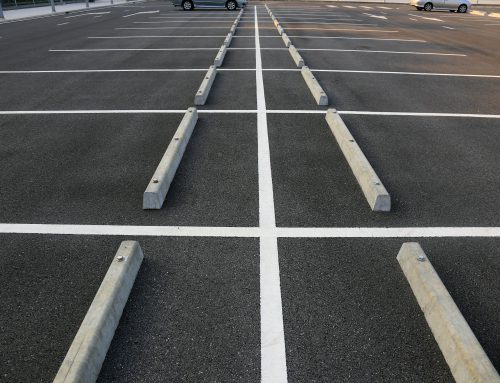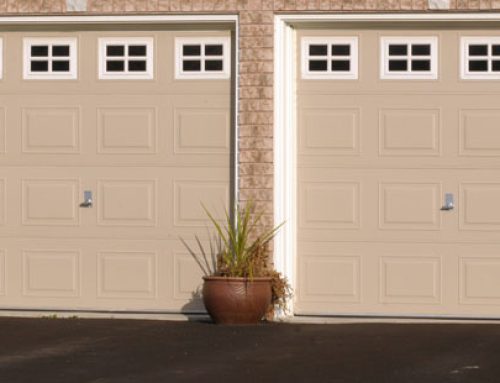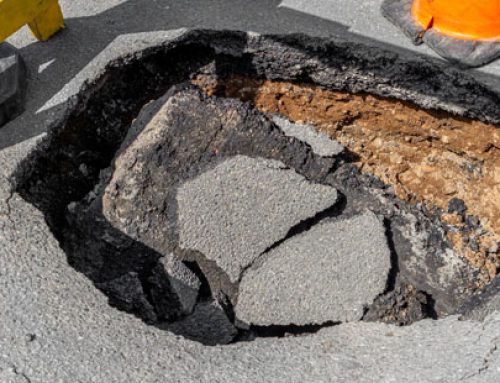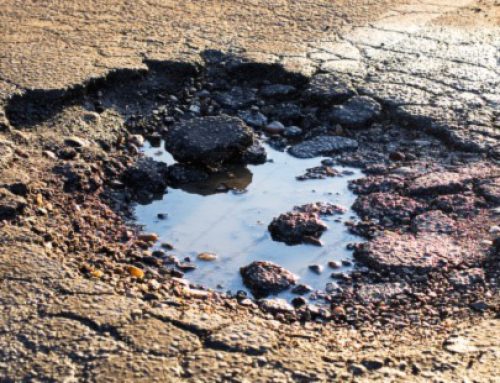Technology plays an incredible role in our everyday lives – from smartphones and TVs to appliances and vehicles. And this applies to every industry – including the asphalt paving industry.
To the outside observer, it might not seem like a whole lot has changed in the world of asphalt paving. But paving technology has come a long way over the years – and it has made the job easier, more efficient, and with better results for our paving clients.
Let’s take a look at how technology has improved over the years.
Site Preparation
Before asphalt installation, the site must be properly prepared. In the past, contractors had to look through sight glass (or transit) to establish the appropriate grade. The contractor used a plumb-bob and looked through the transit to locate the target that helped them establish grade.
Today, a laser-guided transit allows a paving team to decipher heights even across long distances using laser technology. Contractors can efficiently determine slope and grade to ensure accuracy for site drainage.
Asphalt Removal
An asphalt installation requires the complete removal of old asphalt or concrete. The old method involved a walk-behind road saw with a diamond blade that saw-cut the old surface so it could be removed.
New hydraulic technology allows paving professionals to quickly cut wide trenches in old asphalt – saving time and money.
Sub-Base Evaluation
Before contractors lay new asphalt, they must test the sub-base to ensure it provides solid support for years to come. In the past, there was no way to test the sub-base after it was laid and compacted. If the entire sub-surface isn’t structurally sound, it can’t support asphalt and constant traffic.
Today, advancements in technology make it easier to test the integrity of the sub-base with a proof roll and nuclear density testing. A proof roll requires running a 72,000-pound truck over the surface to find areas where the sub-base flexes more than one inch. Nuclear density testing evaluates the density of the material in the pavement. The goal is 99% density/compaction. Technology and these two testing methods ensure better overall results.
UnderCutting Repair
Undercutting is used to repair a single compromised sub-base area that’s within a larger asphalt surface. The old (and costly) method was to dig down about 3 feet and refill the area with stone and aggregate to rebuild the sub-base support structure.
The new advanced paving method uses a geo-grid or fabric, which means contractors only need to dig about 18 inches below the surface to make repairs. The geo-grid acts as a bridge and provides support to the sub-base without the added cost of filling in a large hole with aggregate. This saves time and money – and provides lasting results.
Preventative Maintenance
Preventative maintenance will almost double the lifespan of asphalt pavement. In the past, preventative maintenance methods like crack filling and seal coating weren’t available.
Today, you can extend the lifespan of your asphalt pavement when you establish a preventative maintenance schedule. At Premium Asphalt Paving & Sealcoating, educating our customers on the cost-saving benefits of regular maintenance allows us to provide a quality product with lasting results.
Looking for a Paving Contractor in Bryan/College Station and the Surrounding Brazos Valley?
At Premium Asphalt Paving & Sealcoating, we use the latest technology and techniques to provide our customers with superior residential and commercial paving services. Whether you need new asphalt installation, repair, or resurfacing – we’re the local paving contractors you can rely on for high-quality, durable results. Contact us today for a free estimate on your next asphalt project!








